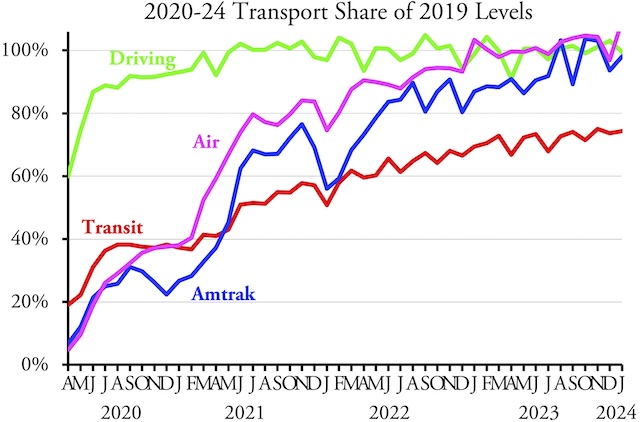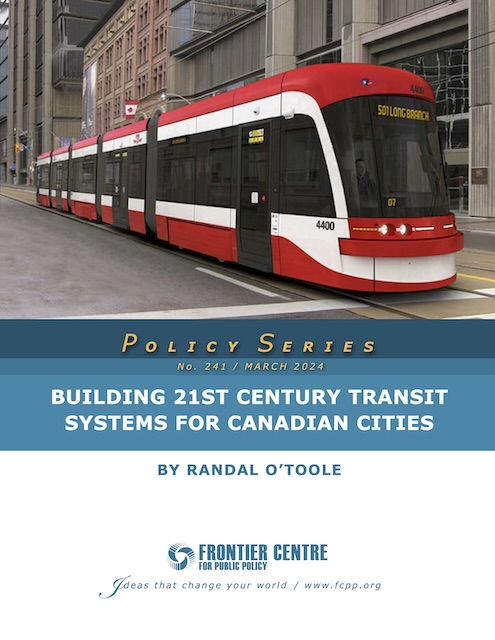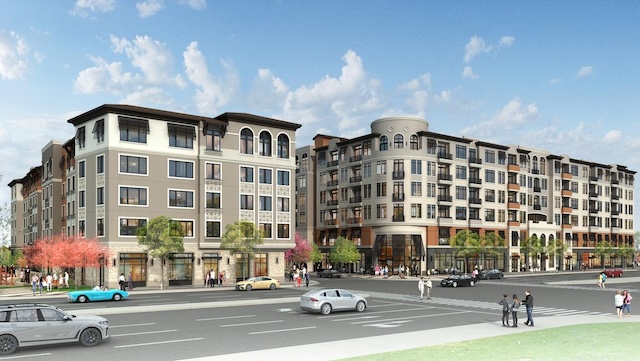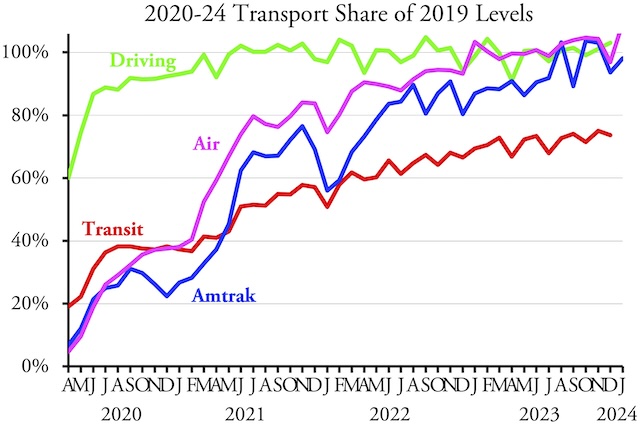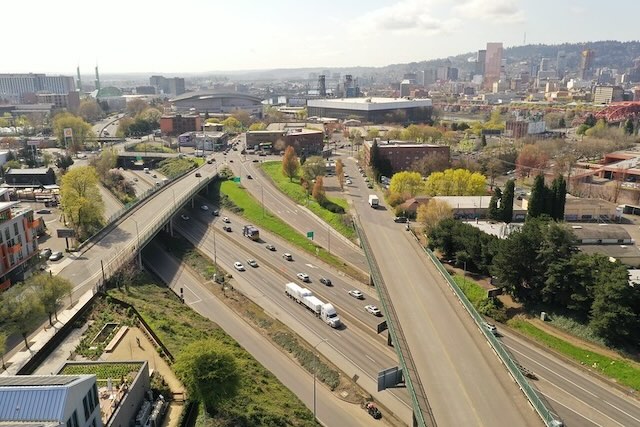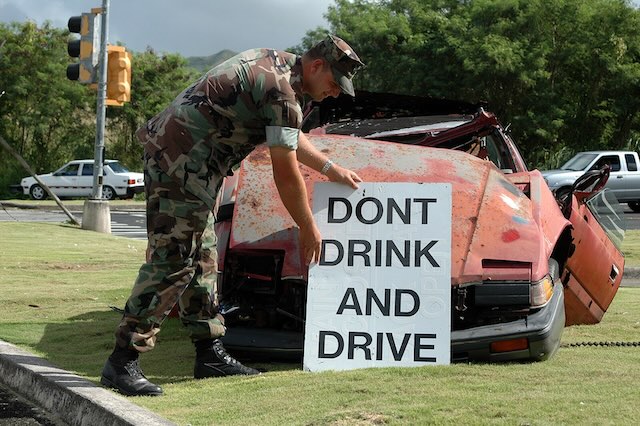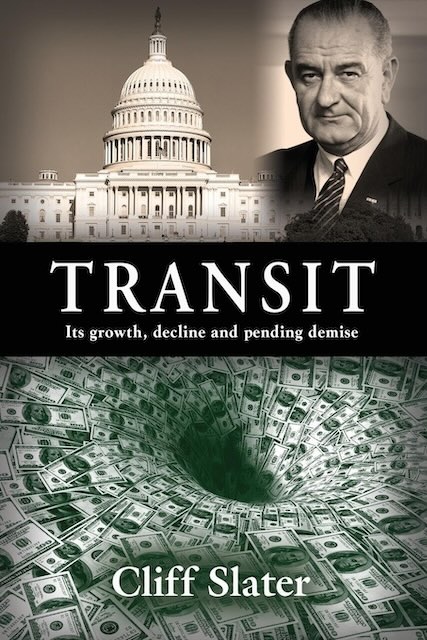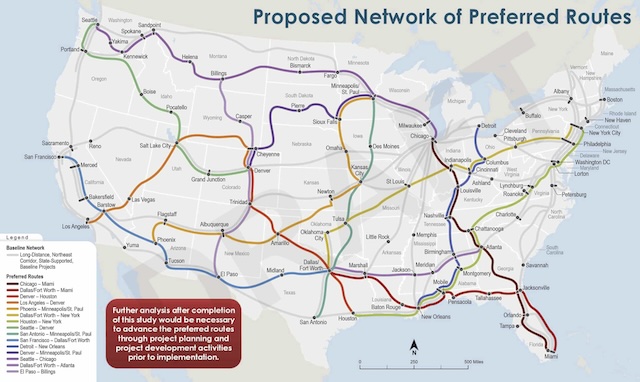Driving and flying have been hovering around 100 percent of pre-pandemic levels for the last year and Amtrak has been around 100 percent for the last six months, but transit is still stuck at just below 75 percent, according to monthly data released by the Federal Transit Administration yesterday. Transit first reached 73 percent last March and 74 percent in September, and even exceeded 75 percent in November (a month that had more business days in 2023 than 2019), but it doesn’t look like it will get significantly above 75 percent for a long time.
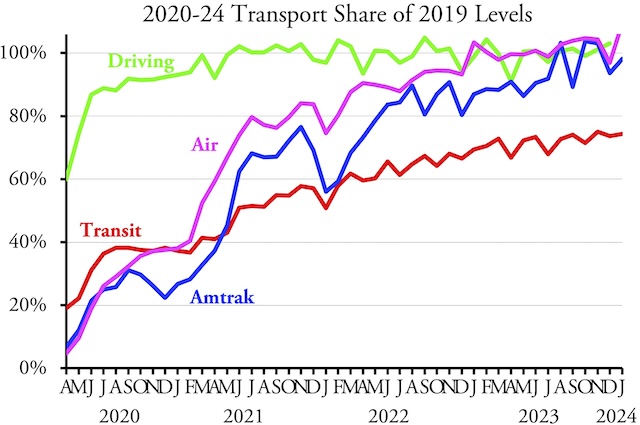
When measured as a percent of pre-pandemic travel, transit continues to lag well behind all other modes of travel. Highway data for January 2024 should be available soon. For more on Amtrak and air travel, see yesterday’s post.
The results vary by urban area, of course. Above-average areas include New York (80.5%), Miami (90.5%), Washington (80.6%), San Diego (80.6%), Tampa-St. Petersburg (83.4%), Las Vegas (83.6%), Cincinnati (96.7%), Austin (82.8%), and Richmond (113.1%). Remaining well below average are Chicago (62.6%), Atlanta (53.0%), Boston (62.0%), Detroit (54.7%), Phoenix (50.4%), San Francisco-Oakland (59.0%), St. Louis (58.6%), Pittsburgh (54.5%), and Jacksonville (56.9%). Continue reading →

